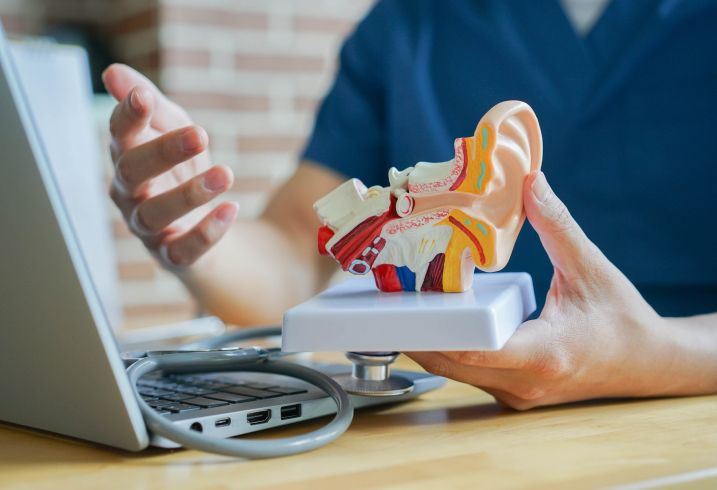ENT Spread

I have always been fascinated by the delicacy and intricacy of the Ear, Nose and Throat (ENT) structure and the work that we do in the head.
The practice involves about 80% of medical management and 20% surgical management of patients. This means that I get to spend time and interact a lot with my patients. These include children, and they are always very funny. It’s a great feeling to make them well and see them laughing again. I also enjoy surgery because of the very fine and detailed work that it requires and how it tends to produce almost immediate results. It’s very satisfying to see the happy patient and relatives after surgery.
In terms of lifestyle, my family is very glad that I do ENT. All medical professionals need to work very hard and for long hours. Unlike some other specialist disciplines, in ENT, we are able to maintain a good family and social life, as we do not have too many emergencies. Although, occasionally, we do get very exciting emergencies like massive nose bleeds and airway obstructions which can be life threatening.
One common problem area that I treat at my ENT clinic comprises of snoring and obstructive sleep apnea (OSA) and other sleep disorders.
Snoring is the noise made during sleep when something obstructs airflow through the airways. The air squeezes past the obstruction, making a whistling or rattling sound.
Snoring that gets worse over time may lead to OSA. In these cases, the obstruction is so severe that the air entering the lungs is greatly reduced. The heart and lung muscles must therefore work harder to get an adequate oxygen supply. The lungs become so tired that they “take a break.” The sleeper actually stops breathing. A nonbreathing period that lasts more than 10 seconds is called an “apnea”. A patient is diagnosed as having OSA if he has more than five apnea episodes an hour. In severe OSA cases, the sleeper may have 50-60 (or even more) apnea episodes an hour, some lasting over a minute long each.
OSA has many undesirable effects. When the blood oxygen levels drop, there is drop in the oxygen supply to the brain and other organs, possibly leading to "brain suffocation" and adversely affecting the body's performance and functions. Also, because of the lowered oxygen levels, the heart may increase its rate, cardiac output and blood pressure, which could increase the risk of heart attack or stroke. Thus, early intervention is important.
Overy my years of experience, there are many cases that are significant, but one that immediately comes to mind is a lady whom I saw again recently. I first saw her about 12 years ago. She had nose cancer, which had recurred after three rounds of radiotherapy and chemotherapy. The radiation oncologist could not give any more radiotherapy. The cancer was deep-seated in the nose, in the base of the skull. The radiation oncologist could not give any more radiotherapy. The cancer was deep-seated in the nose, in the base of the skull. After detailed discussion with the patient about her surgical options, we decided to proceed with endoscopic surgery. At that time, the conventional approach for a tumour in this area was a rather traumatic surgery known as “face-splitting” (the name says it all). At that time, endoscopic surgery was considered quite innovative.
Endoscopic sinus surgery involves the insertion of a scope through the nose, without external excision. Although the equipment at that time was in its early stages and some improvisation was needed, the entire cancer was removed. The brave lady had a good recovery and is still well and cancer-free, 12 years on. I am glad to say that great advances have been made in endoscopic sinus surgery and its instrumentation over the last decade and it is now considered the norm.
Recent technology and medical advancements continue to make ENT a very interesting and challenging field. You can never stop studying and mastering new things! All in all, I find the practice very interesting, challenging and fulfilling.
Our Singapore ENT clinic specialises in the end-to-end management of all ear, nose, and throat conditions while keeping the best ENT practices in mind.









